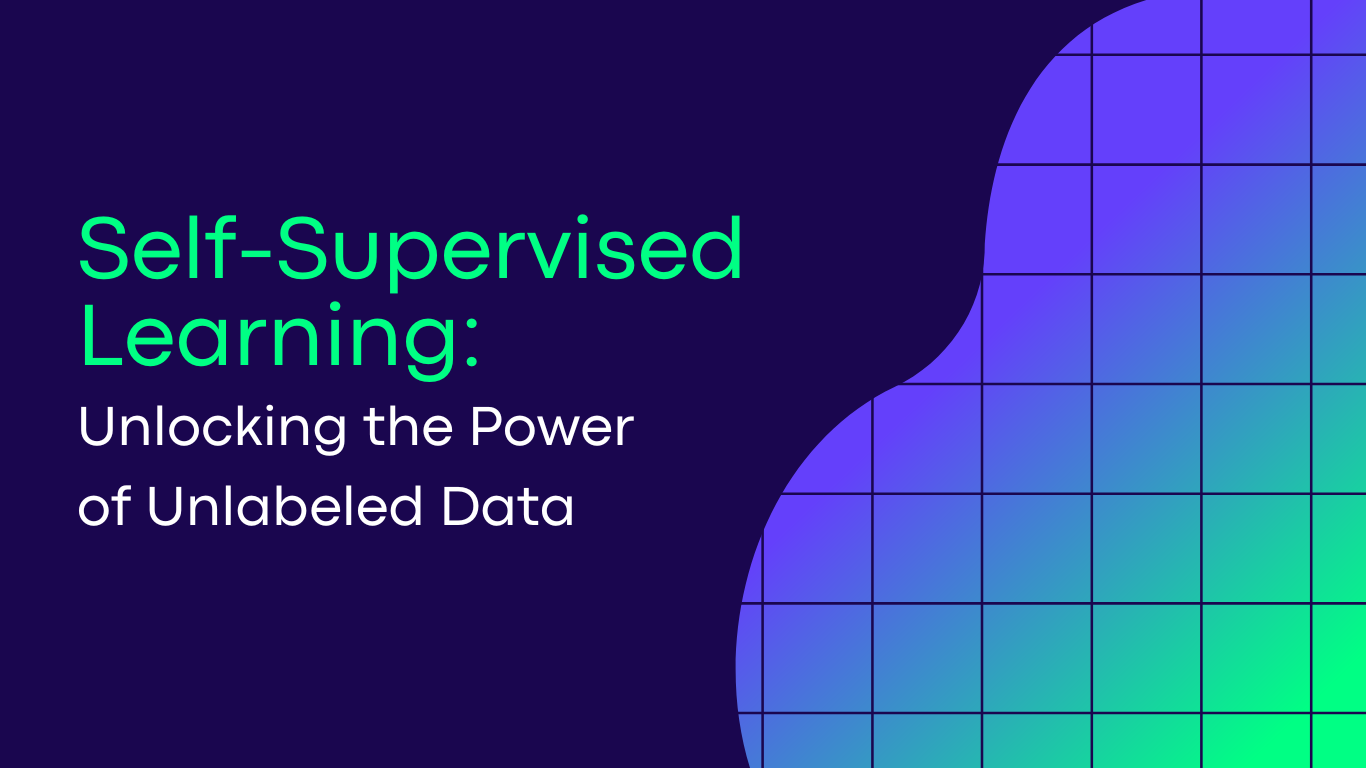Trainomart
Self-Supervised Learning: Unlocking the Power of Unlabeled Data
Self-Supervised Learning: Unlocking the Power of Unlabeled Data
📑 Lessons : 6 Lesson
🕒 Duration : 2 days
🎚️ Skill level : Advanced
📑 Language : English
Couldn't load pickup availability
This 2-day course delves into the transformative potential of self-supervised learning (SSL) in leveraging unlabelled data to improve model performance and efficiency. Designed for practitioners and researchers with a background in machine learning, this course explores the foundational concepts of SSL, its advantages over traditional supervised learning, and its real-world applications. Participants will engage in hands-on projects to implement various self-supervised learning techniques using popular frameworks. By the end of the course, attendees will be equipped with practical skills to harness the power of unlabelled data in their own projects.
Share

What you'll learn
✔️ Understanding self-supervised learning and its importance
✔️ Implementing pretext tasks for self-supervised learning
✔️ Using models like SimCLR and BERT for self-supervised tasks
✔️ Training models using unlabeled data and transfer learning
✔️ Real-world applications in computer vision and NLP
Prerequisites
✔️ Basic knowledge of machine learning and neural networks
✔️ Experience with Python and deep learning libraries
Course Content
Module 1: Introduction to Self-Supervised Learning (Duration: 2 hours)
✔️ Overview of supervised, unsupervised, and self-supervised learning
✔️ Importance of unlabeled data in machine learning
✔️ Hands-on: Setting up the environment and exploring SSL concepts
Module 2: Core Principles of Self-Supervised Learning (Duration: 3 hours)
✔️ Understanding contrastive learning and predictive tasks
✔️ Key architectures and algorithms in SSL
✔️ Hands-on: Implementing a basic self-supervised model
Module 3: Advanced Self-Supervised Learning Techniques (Duration: 3 hours)
✔️ Deep dive into methods like SimCLR, MoCo, and BYOL
✔️ Applications in computer vision and natural language processing
✔️ Hands-on: Fine-tuning a self-supervised model for a specific task
Module 4: Self-Supervised Learning for Natural Language Processing (Duration: 3 hours)
✔️ SSL techniques in NLP: Masked language models and embeddings
✔️ Case studies of successful applications
✔️ Hands-on: Building a self-supervised NLP model
Module 5: Evaluating Self-Supervised Models (Duration: 2 hours)
✔️ Metrics and benchmarks for SSL performance
✔️ Best practices for evaluating model effectiveness
✔️ Hands-on: Analyzing and comparing self-supervised models
Module 6: Capstone Project: Applying Self-Supervised Learning (Duration: 3 hours)
✔️ Identifying a real-world problem for SSL application
✔️ Designing and implementing a self-supervised learning solution
✔️ Hands-on: Presenting the final project
Frequently Asked Questions
📍 Question1: What is self-supervised learning, and how does it differ from supervised learning?
Answer: Self-supervised learning is a type of machine learning where models learn from unlabeled data by predicting part of the data from other parts. Unlike traditional supervised learning techniques, which rely on large labeled datasets, self-supervised learning can significantly reduce the need for labeled data.
📍 Question2: Who should take this self-supervised learning course?
Answer: This course is designed for machine learning practitioners, researchers, and AI professionals who already have a basic understanding of supervised machine learning models and are looking to expand their knowledge into self-supervised techniques.
📍 Question3: What are the key benefits of self-supervised learning?
Answer: Self-supervised learning allows for the use of vast amounts of unlabeled data, which is more readily available than labeled data. This approach can improve model performance and efficiency, particularly in domains where labeling data is expensive or impractical.
📍 Question4: What practical skills will I gain from this course?
Answer: Participants will gain hands-on experience in implementing self-supervised learning models, using frameworks like SimCLR and BERT, and applying these models to real-world problems in computer vision and NLP.
📍 Question5: How does this course integrate with other supervised learning courses online?
Answer: This course builds on foundational knowledge from supervised learning courses online, adding advanced techniques in self-supervised learning, thus complementing traditional supervised learning approaches.
📍 Question6: Do I need to have prior experience with supervised learning models to enroll?
Answer: Yes, a basic understanding of supervised learning models and techniques is required to grasp the advanced concepts covered in this course.
📍 Question7: How is this course structured, and what kind of support is available?
Answer: The course is structured into six modules with a mix of theoretical lessons and practical projects. Expert instructors will provide guidance, and participants will have access to comprehensive course materials for additional study.
📍 Question8: Will I receive a certification upon completing the course?
Answer: Yes, participants will receive a certificate of completion, validating their skills in self-supervised learning and their ability to apply these techniques effectively.
📍 Question9: What is the format of the capstone project?
Answer: The capstone project involves applying self-supervised learning techniques to a real-world problem, consolidating the knowledge and skills gained throughout the course.
📍 Question10: Are there any discounts available for this course?
Answer: The course is currently offered at a discounted rate of $499.00, down from the original price of $2000.00, providing an affordable option for advanced learning.

